When fellow staff writer Hannah Gersen asked if I had any visuals that helped me to better understand my novel-in-progress — a timeline, for example, or an Excel spreadsheet — I didn’t have much to offer. Her request made me think, though, about the other visuals we writers surround ourselves with, however silly or inessential: for inspiration or company, as talismans or reminders. I currently have two favorites. The first is a note from my husband that reads, “To Be Eaten In Case of Emergency!”, which last spring he attached to a chocolate bar and stowed away in the luggage I took to a writers’ retreat. The chocolate bar is long gone (alas), but the note by itself makes me laugh, offering comfort in my lonely little office. Someday, when things get really dire around here, I might just rip the note off the wall and stick it into my mouth.
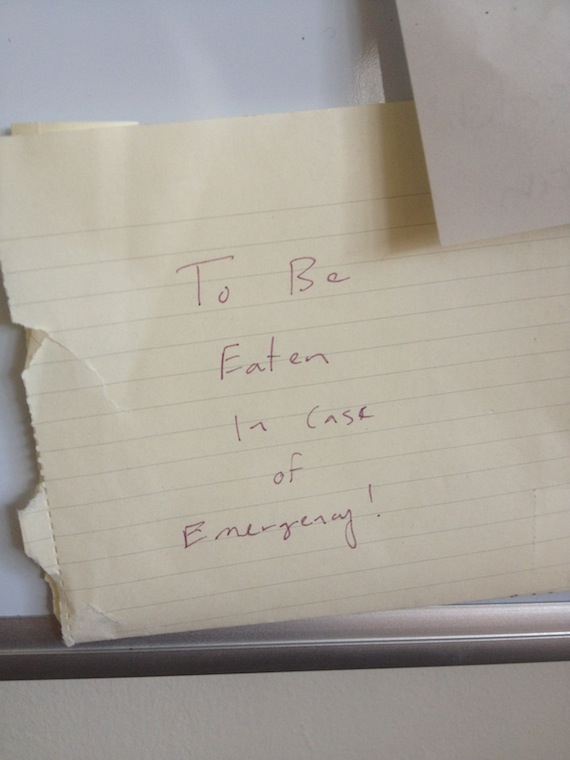
The second is a photograph by Klaus Pichler, called “Middle Class Utopia 21.” I find the image ominous and strange and beautiful, as I hope my novel-in-progress, Woman No. 17, is — or will be. There’s also a lot of photography in my book, and I find it useful to stare at this picture and think about staging, perspective, color, and artistic intention.
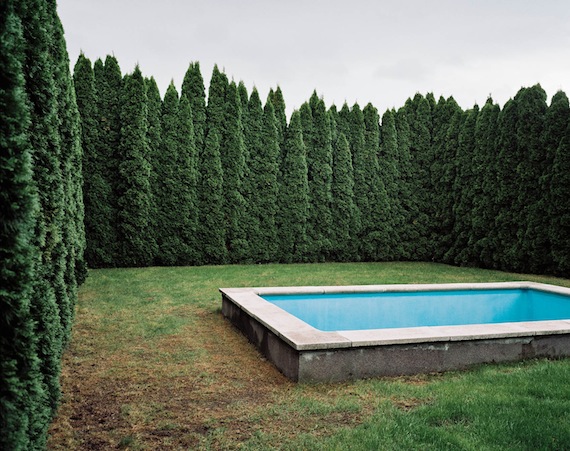
I asked a few writers to share what visuals they kept near them while working. Perhaps what they keep near them as they make sentences will inspire you to get writing, too.
1. Christian Kiefer, author of The Infinite Tides and, forthcoming, The Animals:
As a novelist, I tend toward strict realism. Nonetheless, for five years I’ve been working on a long novel in the spirit of [Jorge Luis] Borges and [Italo] Calvino, a book detached from strict realism. I’ve taped Kayama Matazo’s “Winter” to the wall in my workspace to remind myself of the world I’m trying to create: weird, malicious, strangely beautiful, and filled with flapping animal life. That book is at 650 pages in manuscript so far but I’m beginning to see the end.
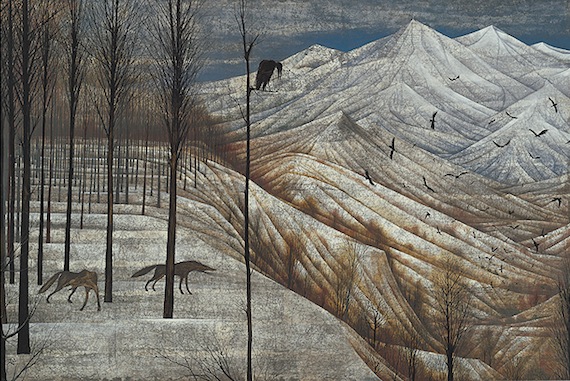
2. Catie Disabato, author of the forthcoming novel The Ghost Network:
This is a picture of my mom when she was a teen; she’s the second girl from the left, the one looking at the camera. I love it because she looks beautiful but also like she’s the vicious enforcer in a ’60s girl gang. My mom is an artist and has supported my writing since I was a tiny little girl, so looking at this picture reminds me both of the foundation she built and the creative home I grew up in. When I need writing energy, looking at this picture charges my batteries. I have a copy of this image on every single device I own.
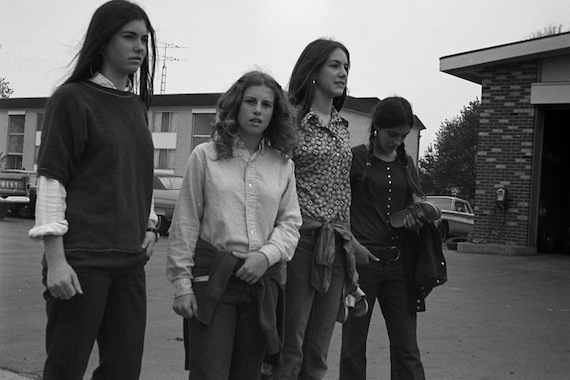
3. Susan Straight, author, most recently, of Between Heaven and Here, and the winner of the Los Angeles Times Kirsch Award for lifetime achievement:
Three things always on my desk are a photo of my three girls when they were little, a piece of fluff with a black seed inside that floated down from the tree my brother planted in the yard, a shell I found near a Sea Island in South Carolina to remind me of my first novel, I Been in Sorrow’s Kitchen And Licked Out All the Pots. Two things for the novel I’m working on now are sea glass I found on a small beach on Prince Edward Island, and a wallet covered with PEI lupines given to me by my best friend, writer Holly Robinson.
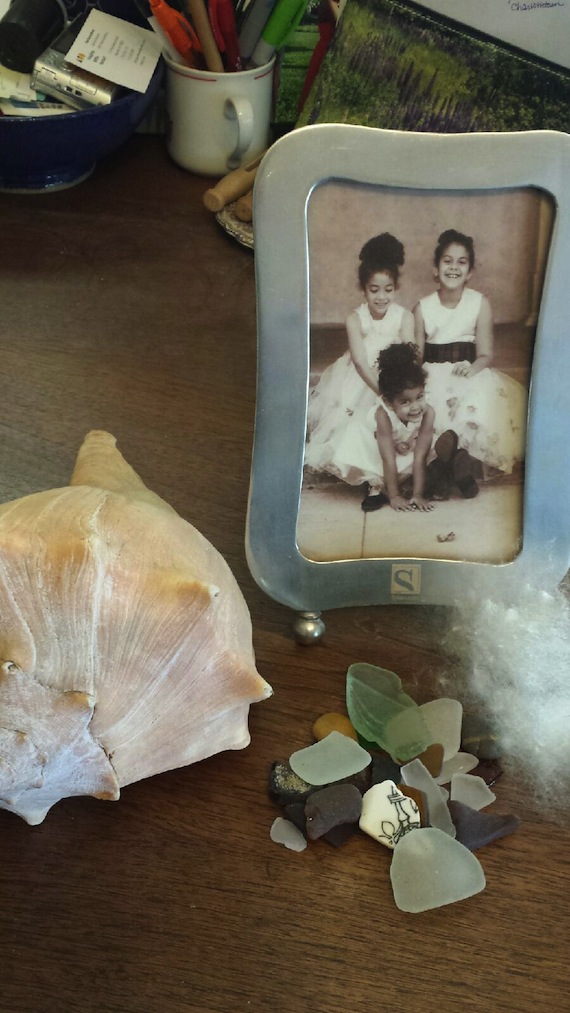
4. Marie Mutsuki Mockett, author of the novel Picking Bones from Ash and the nonfiction book Where the Dead Pause, and the Japanese Say Goodbye:
A wise friend once said to me that sometimes you simply have to do things scared. I was scared the entire time I wrote Where the Dead Pause, and the Japanese Say Goodbye. No one really likes to hear about a writer’s insecurities, but I had and have had them in spades and they plagued me throughout this project. There’s really only one way out of fear for a writer, and that is to work. And so, I put a note on my computer that simply reads: “Work.” I’d switch on Facebook, from which I had previously taken a long hiatus, and get distracted, and then look down and see my note to myself, and then I’d exit Facebook and then I’d work. And wouldn’t you know — I finished writing the manuscript. And it became a book.
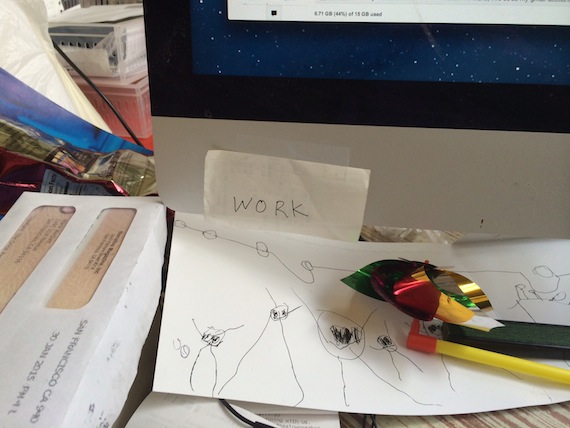
5. Paula Tang, a current MFA candidate at the University of California, Riverside, at work on her first book, a novel in stories presently titled Little China House:
When you asked if I look at anything interesting on my desk when I write, I didn’t even know how to begin to describe this print that I have by artist Kimiaki Yaegashi. The illustration is beyond strange, and reminds me to push past the familiar in my writing, to always weird my images somehow and aim to surprise and electrify the reader.
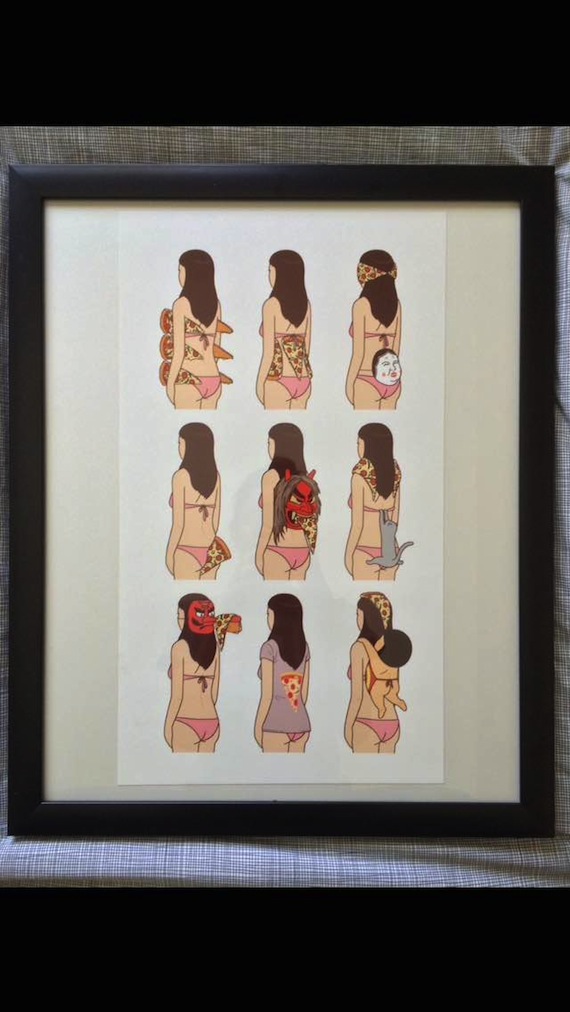
6. Rebecca Makkai, author of two novels, The Borrower and The Hundred-Year House, and the forthcoming story collection, Music For Wartime:
Okay, this is temporary, obviously, but: I’m at Yaddo now, writing from a little studio on the third floor of West House. Sylvia Plath wrote The Colossus in this room, and Patricia Highsmith wrote Strangers on a Train. You start to go a little crazy working 16-hour days alone (making friends with insects, etc.). I drew a face on this orange, a la Wilson from Castaway. And then I decided it looked like Patricia Highsmith. It helps to get work done…You can’t spend too much time playing computer solitaire if Patricia Highsmith is staring at you. Of course, I’ll eventually have to eat her…
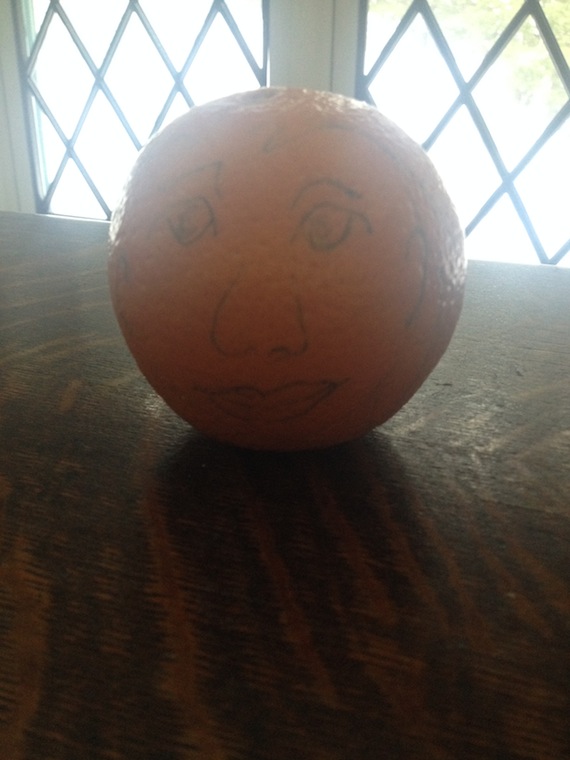
7. Celeste Ng, author of Everything I Never Told You:
This is a painting I made, which hangs over my desk. It’s actually a passage from Annie Dillard’s The Writing Life. Each color represents a different letter of the alphabet, so the colored blotches can be decoded to read as follows:
Every morning you climb several flights of stairs, enter your study, open the French doors, and slide your desk and chair out into the middle of the air. The desk and chair float thirty feet from the ground, between the crowns of maple trees. The furniture is in place; you go back for your thermos of coffee. Then, wincing, you step out again through the French doors and sit down on the chair and look over the desktop. You can see clear to the river from here in winter. You pour yourself a cup of coffee.
Birds fly under your chair. In spring, when the leaves open in the maples’ crowns, your view stops in the treetops just beyond the desk; yellow warblers hiss and whisper on the high twigs, and catch flies. Get to work. Your work is to keep cranking the flywheel that turns the gears that spin the belt in the engine of belief that keeps you and your desk in midair.
I love this quote, and it’s especially fitting as my office is on the second floor, accessed by French doors, and with maple trees right outside the window. But I wanted it to look visually beautiful too, and this is what I came up with. Whenever I look up from my computer, I see the painting and remember what it says, without getting distracted by words when I’m wordsmithing myself.

What do you keep by your desk? I’d love to hear.








